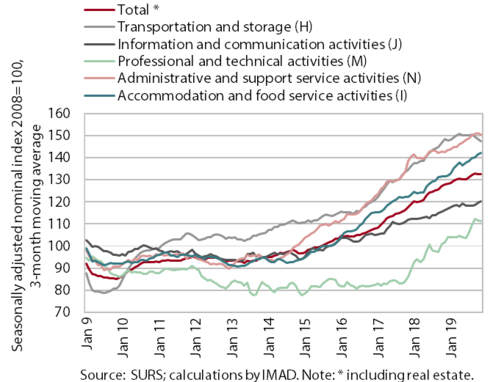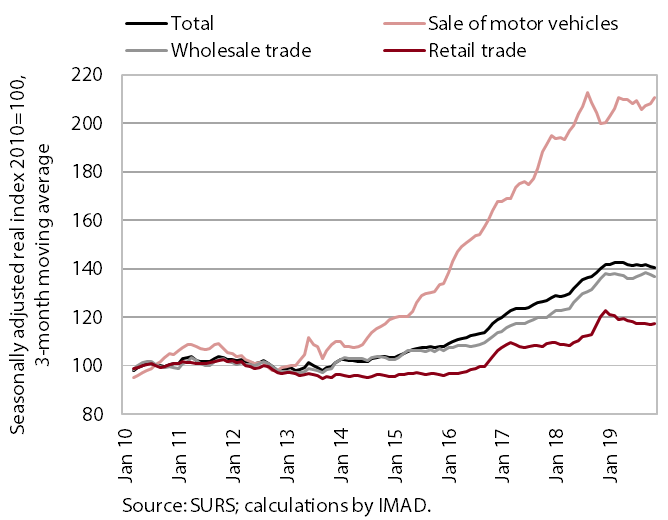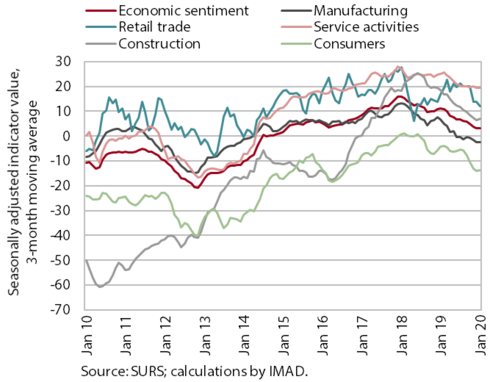Charts of the Week
Current economic trends from 27 to 31 January 2020: market services, trade and economic sentiment indicator
Strong turnover growth in market services came to a halt towards the end of last year. Turnover in trade has been stagnant since the beginning of 2019. Confidence in these activities has otherwise remained at relatively high levels at the beginning of this year. Confidence in the entire economy has improved again, but remains lower than in the same period of last year.
Market services, November 2019

Turnover in market services remained at the achieved level towards the end of last year. November saw a continuation of strong turnover growth in information and communication services, which has, for a quite a long time, been due to growth in exports of computer services; turnover in telecommunications also increased significantly for the second consecutive month after several months of decline. Further growth was also recorded in accommodation and food service activities, mainly owing to good business results of enterprises serving food and beverages. Turnover growth in administrative and support service activities decreased, despite renewed growth in employment services. In professional and technical activities, turnover dropped again amid a further fall in architectural and engineering services. Since the middle of the year, turnover has also continued to shrink in most transportation activities.
Trade, November 2019

In November, turnover in trade maintained the level seen at the beginning of the year. Turnover in retail trade ceased declining in the last months to November. Amid a fall in the sale of automotive fuels and stagnation in the sale of food and beverages, November saw further modest growth in the sale of non-durable non-food products and a significant increase in the sale of household appliances1. Turnover in wholesale trade remained similar to the beginning of 2019, which is attributable to the moderation of activity growth in related activities (especially manufacturing). Turnover in the sale of motor vehicles improved somewhat at the end of last year after stagnating in the first half. The improvement was a consequence of higher passenger car sales to natural persons and December’s high growth of sales to legal persons.
____
1 Related also to the strong growth in newly granted consumer loans before the tightening of borrowing conditions.
Economic sentiment indicator, January 2020

Economic sentiment improved somewhat again in January, but remains considerably lower year on year. The improvement was attributable to all sectors, except retail trade, where expectations about future sales dropped in particular. Higher confidence in manufacturing arose mainly from higher orders and business expectations regarding the volume of production. Confidence in construction and among consumers improved for the second consecutive month after a period of pronounced decline. Confidence in service activities, fairly stable in the last period, has also remained relatively high.
